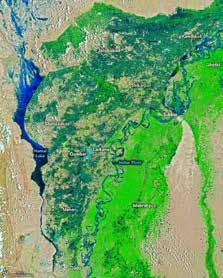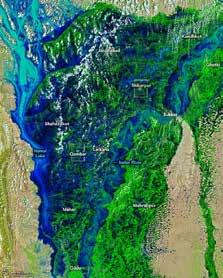
1 minute read
PAKISTAN FLOODS APPEAL HUMANITARIAN CONTEXT
Pakistan is among the top ten countries most affected by climate change3. It has seen changing weather patterns, more frequent and more severe storms and coastal rains, glacial melt and lake outburst flooding, sea level rise, loss of biodiversity, droughts and formerly fertile land becoming desert.4
Between June and August 2022, Pakistan was affected by the most severe flooding the country has ever seen. Lives were lost and homes were destroyed. The floods also caused enormous damage to infrastructure, submerging villages under floodwater, and destroying livelihoods. Nearly 900,000 houses were destroyed and 1.4m houses were badly damaged.

The Government of Pakistan estimates that the floods will increase the national poverty rate by up to four percentage points, pushing between 8.4 and 9.1 million people into poverty.5

By October 2022,6 the Government of Pakistan declared 94 districts, accounting for over half of all districts in the country, “calamity hit.” The majority of these districts were in the provinces of Balochistan, Sindh, and Khyber Pakhtunkhwa (KP). Out of the 25 poorest districts in the country, 19 were affected by the disaster.3
The floods destroyed extensive areas of crops and killed over a million livestock, adding another element to the long-term impact of the disaster as agriculture represents the main source of income for many communities in the affected areas. Food stores have been destroyed and fields will not be ready for the next planting season, increasing the risk of further food insecurity. In Sindh and eastern Balochistan, many people who have been able to return to their villages, found that water sources are still contaminated –forcing people to travel much further to access safe water.
The DEC Pakistan Floods Appeal was launched 1 September 2022 to provide immediate and medium- to long-term assistance to those most affected and built on learning from the 2010 DEC Pakistan Flood response. For this appeal, DEC funding contributed directly to meeting basic needs by providing shelters, food and other material assistance, along with cash assistance (see box on page 7), and by deploying mobile health teams and emergency water, sanitation and hygiene facilities to ensure people had access to primary healthcare and safe water.
33 million people (one in seven) affected by floods and flash floods across 94 districts










